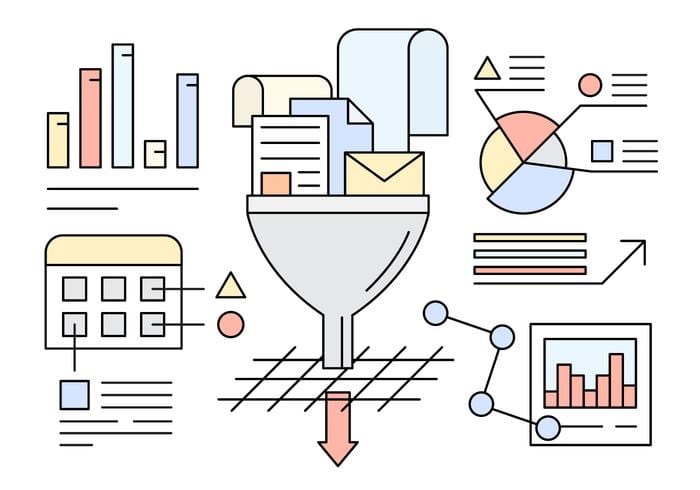It is no secret that some of the best designed websites that have plenty of online traffic can still suffer from low conversions. In this instance, it is rather pointless to try and increase traffic, when your conversions are so low. The best solution is to design a sales funnel to engage and nurture your existing traffic, turning them into leads, prospects and ultimately, into paying customers.
So let’s take a look at the basics of a sales funnel for your website.
What is a sales funnel?
This is a three step process that is designed to generate leads, turn them into prospects and then into customers. A sales funnel is like an upside down triangle with the wide base being the step where all of your leads are generated. These leads can be generated from paid ads, social media posts, infographics, videos or blog posts.
If you have lots of traffic to your website, but you are experiencing low conversion rates, you will most probably already have this step well in hand. As with many other businesses, it is when you have generated a good amount of leads - that the wheels fall off.
This means that you need to pay close attention to the remaining steps in your sales funnel, because it is at one or both of these steps that there is a weakness.
Turning leads into prospects with landing pages
When someone clicks on a link to your website, their browser should open onto a landing page, which is specifically designed to convert your leads into prospects. This page must include enough information about your products or services, so that your leads want to click on your call to action (CTA) to learn more.
At this stage of your sales funnel, your CTA will either be aimed at subscribing people to your mailing list or downloading a free eBook, rather than being pushed into making a purchase. This is because most people like to think before making a purchase.
So once they have given you their email address, you can move on to the next stage of your sales funnel and turn these prospects into customers.
Turning prospects into paying customers
This is where you automatically enter every prospect’s email address into your auto-responder. Over the course of one or more weeks, they will receive a sequence of emails that are designed to encourage them to make a purchase. You might include time limited discount offers, 50% off vouchers or additional upsells, all aimed at converting them from prospects into customers.
If you are successful at this stage, you can add their email addresses to another auto-responder that retargets them, and hopefully convert them into repeat customers. If they do not become customers after your first sequence of emails, you can add them to yet another auto-responder that attempts the same strategy, but from a different angle.
Testing your sales funnels
It is vital that you test all of the elements of your sales funnels to ensure that they are working at their optimum levels. Even if you have seen a big jump in conversions, you still need to use A/B testing, because you can compare different layouts, fonts, font colours and CTAs, all to determine which combination converts better than others.
If you want help with increasing your website’s conversion rate, call us on 02 8097 7957 or complete our online enquiry form.

